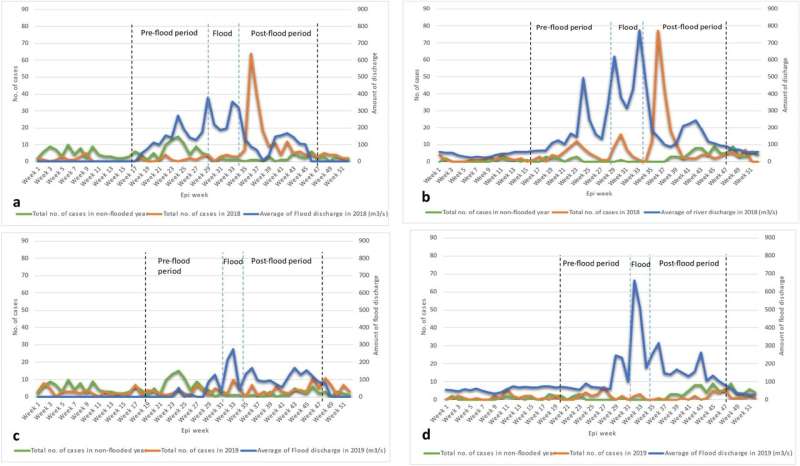This article has been reviewed according to Science X's editorial process and policies. Editors have highlighted the following attributes while ensuring the content's credibility:
fact-checked
trusted source
proofread
More leptospirosis cases occur after floods, study shows

A recent study, published by researchers at the Faculty of ITC in the International Journal of Health Geographics, has shown that flooding leads to increased leptospirosis cases.
First author, John Ifejube is a recent graduate of the master's program in Spatial Engineering. This publication is a direct result of his thesis on GeoHealth.
Flooding is a climate-related disaster that impacts not only the environment but also the well-being of people. Leptospirosis is a blood infection caused by the bacteria Leptospira. People become infected through interaction with contaminated water or urine.
Infected humans can get headaches, muscle pains, and fevers, but severe forms can lead to kidney failure. More and more studies link the spread of leptospirosis with floods, but it has not been extensively studied, until now.
Master's thesis
For his master's thesis, Ifejube conducted a study on the association between the incidence of leptospirosis and the occurrence of multiple floods in Kerala, India. He found that flooding leads to an increase in leptospirosis cases. His study reveals that flood duration is the most important characteristic of floods that can be used to predict the number of infections. According to his research, severe floods lead to more leptospirosis cases than moderate floods.
He compared leptospirosis cases across three different years in time and space. Specifically, he compared the number of cases in 2018 and 2019, which were years with heavy and moderate flooding respectively, to the number of cases in 2017, a year that did not experience any floods.
For each flood year, he looked at the reported cases three months before, during and three months after the flood. To assess the severity of floods, he determined the population exposed to each flood event using high-resolution satellite images. Finally, he used spatial regression to examine the relationship between post-flood cases and flood extents.
More information: Oluwafemi John Ifejube et al, Analysing the outbreaks of leptospirosis after floods in Kerala, India, International Journal of Health Geographics (2024). DOI: 10.1186/s12942-024-00372-9
















